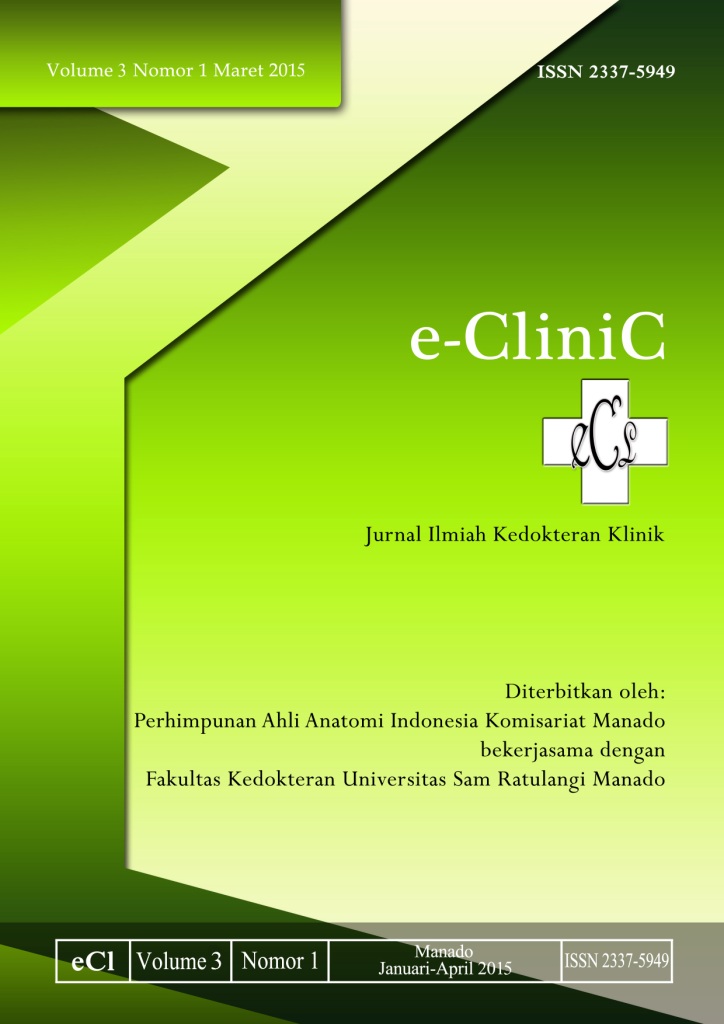PREVALENSI DEPRESI PADA PASIEN STROKE YANG DI RAWAT INAP DI IRINA F RSUP PROF. Dr. R. D. KANDOU MANADO PERIODE NOVEMBER – DESEMBER 2012
DOI:
https://doi.org/10.35790/ecl.v3i1.7610Abstract
Abstract: Depression is one of the most common mental disorders associated in chronic diseases such as stroke. Symptoms of post-stroke depression often unnoticed by clinicians, whereas early management, accurate and integrated, will be more effective. Post-stroke depressive patients who receive good treatment will have better quality of life. This was a descriptive quantitative study with a cross sectional design by using the HDRS instrument. The data were processed by using a univariat analysis. The results showed that 45.8% respondents had mild depression, 25% had medium depression, 4,2% had severe depression, and 25% not had depression.
Keywords: depression, stroke, HDRS
Abstrak: Depresi merupakan gangguan mood yang sering dikaitkan dengan penyakit kronis seperti stroke.Gejala depresi pasca stroke sering luput dari perhatian para klinisi, padahal penanganan yang lebih awal, tepat dan terpadu akan berhasil lebih efektif. Pasien depresi pasca stroke yang mendapatkan penanganan dengan baik mengalami peningkatan kualitas hidup. Penelitian ini bersifat deskriptif kuantitatif dengan pendekatan potong lintang dan menggunakan instrumen HDRS. Data penelitian diolah dengan analisis univariat. Hasil penelitian memperlihatkan sebanyak 45,8% responden mengalami depresi ringan, 25% responden mengalami depresi sedang, 4,2% responden mengalami depresi berat, dan 25% responden tidak mengalami depresi.
Kata kunci: depresi, stroke, HDRS
Downloads
How to Cite
Issue
Section
License
COPYRIGHT
Authors who publish with this journal agree to the following terms:
Authors hold their copyright and grant this journal the privilege of first publication, with the work simultaneously licensed under a Creative Commons Attribution License that permits others to impart the work with an acknowledgment of the work's origin and initial publication by this journal.
Authors can enter into separate or additional contractual arrangements for the non-exclusive distribution of the journal's published version of the work (for example, post it to an institutional repository or publish it in a book), with an acknowledgment of its underlying publication in this journal.
Authors are permitted and encouraged to post their work online (for example, in institutional repositories or on their website) as it can lead to productive exchanges, as well as earlier and greater citation of the published work (See The Effect of Open Access).







